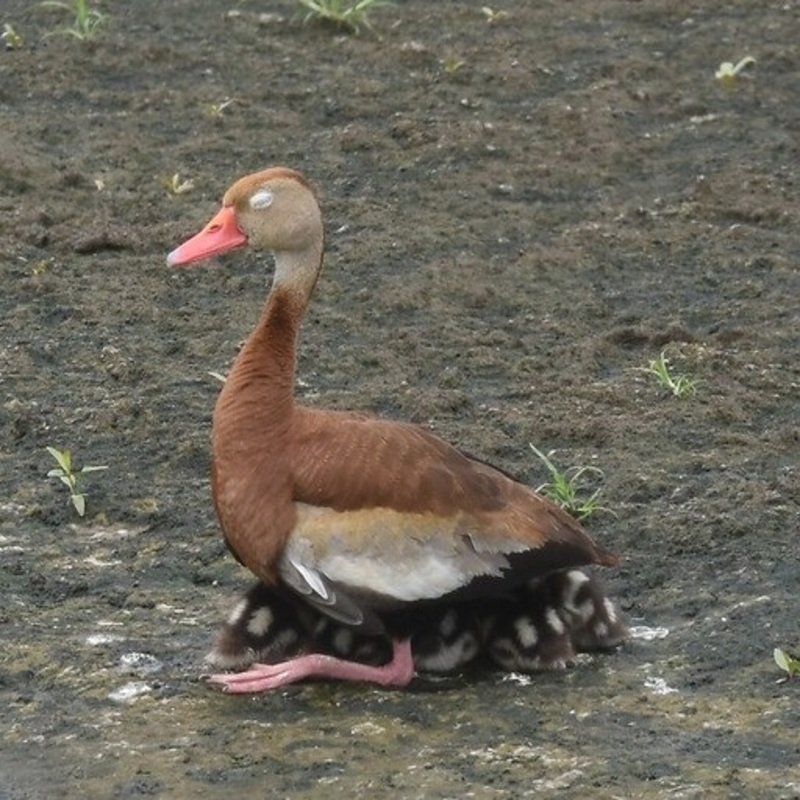The black-bellied whistling duck (Dendrocygna autumnalis), formerly known as the black-bellied tree duck, is a species of whistling duck found in the southeastern United States, Mexico, and tropical Central and South America. Due to the fact that it is one of only two species of whistling duck native to North America, it is occasionally referred to simply as the “whistling duck” or “Mexican squealer” in the southern United States.
Quick Overview: Dendrocygna Autumnalis – Black-Bellied Whistling Duck
Body size: Around 18-21 in (46-53 cm) and a weight of 816 g (28.8 oz)
Main colors: Brown, Black, Pink, Gray, White
Range: Eastern part of the United States
Migratory Bird: Yes
Best time of the year to see in the U.S.: All Year (January – December)
Conservation Status: Least Concern
Black-bellied Whistling Duck Description
Black-bellied Whistling-Ducks are predominantly dark in color, with a chestnut breast and black belly offset by a bright pink bill and legs, grayish face, and broad white wing stripe visible in flight. Immatures have a duller appearance than adults, with a darker bill, paler breast, and speckled black belly.

Size
These birds have a length of 18-21 in (46-53 cm) and a weight of 816 g (28.8 oz). Their wings could range from 34-36 in (86-91 cm).
Feeding
While black-bellied whistling ducks, like many other duck species, graze in shallow water and on land, they are distinctive in that they frequently feed at night. They are predominantly herbivorous, feeding on cultivated grain, grasses, and wetland plants.
Habitat
Black-bellied whistling ducks are found in freshwater swamps, marshes, and coastal lagoons, preferring habitats densely forested with tree thickets.
Behavior
A magnificently marked, gregarious, and vocal waterfowl. Frequently perches on low snags above water and on dead trees. Feeding this species has grown popular in some locations (such as coastal Texas), with landowners dumping maize near ponds to attract hundreds of whistling ducks.
Dendrocygna Autumnalis Scientific Classification
- Kingdom: Animalia
- Phylum: Chordata
- Subphylum: Chelicerata
- Class: Aves
- Order: Anseriformes
- Family: Anatidae
- Genus: Dendrocygna
- Species: Dendrocygna autumnalis
Other common names
Formerly known as the black-bellied tree duck
Best time of the year to see
In the United States, the best time of year to see these birds is all year round, regardless of the season. This refers to any month of the year between January and December.
Distribution of the Black-bellied Whistling Duck in the USA
It is found year-round in peninsular Florida, sections of southeast Texas, coastal Alabama, and Mississippi, and on a seasonal basis in southeast Arizona and Louisiana‘s Gulf Coast. It is a rare breeder in various regions like Arkansas, Georgia, Tennessee, and South Carolina, yet it is becoming more frequent in parts of central Florida.
